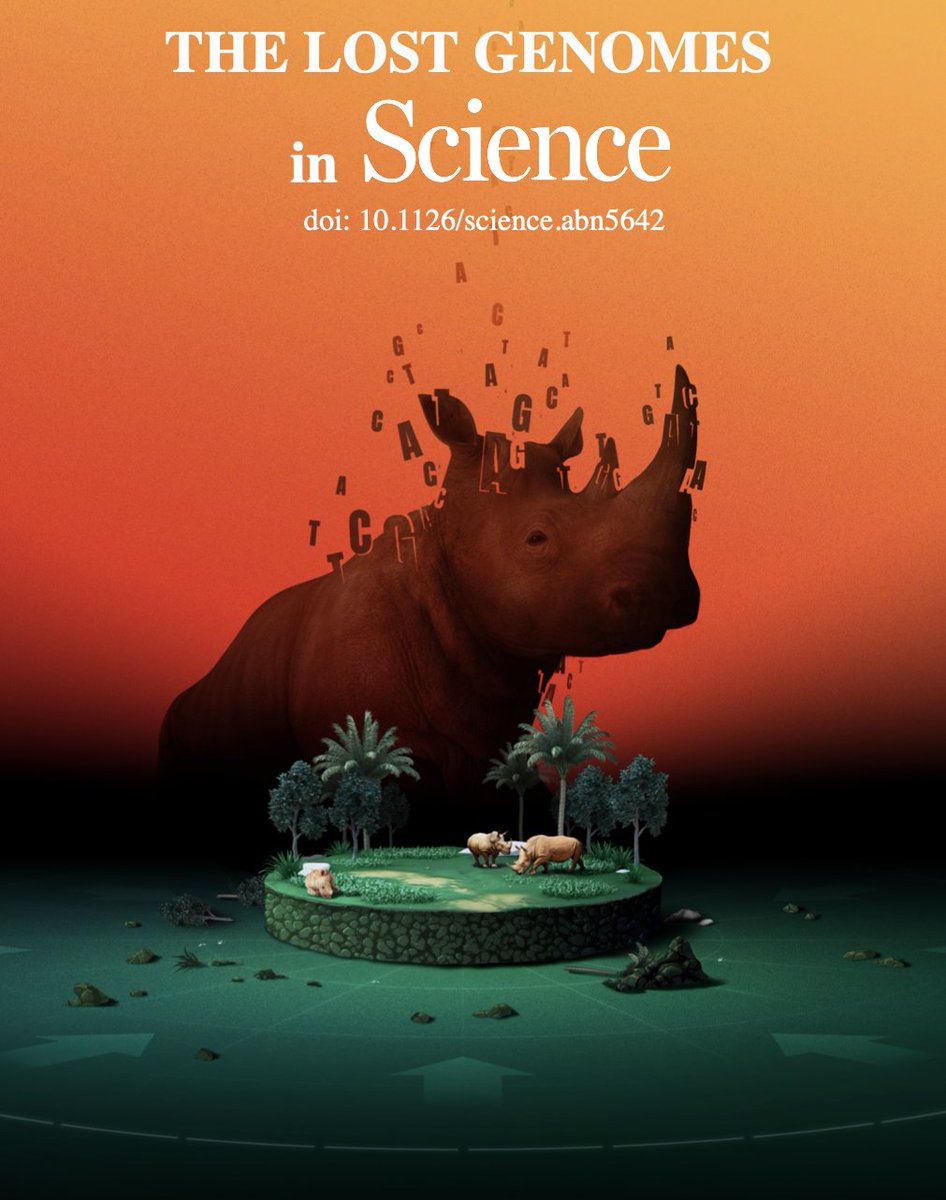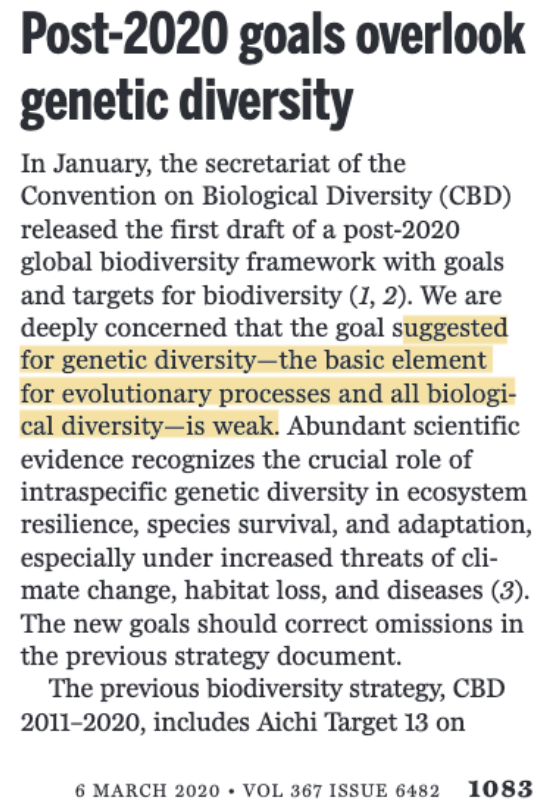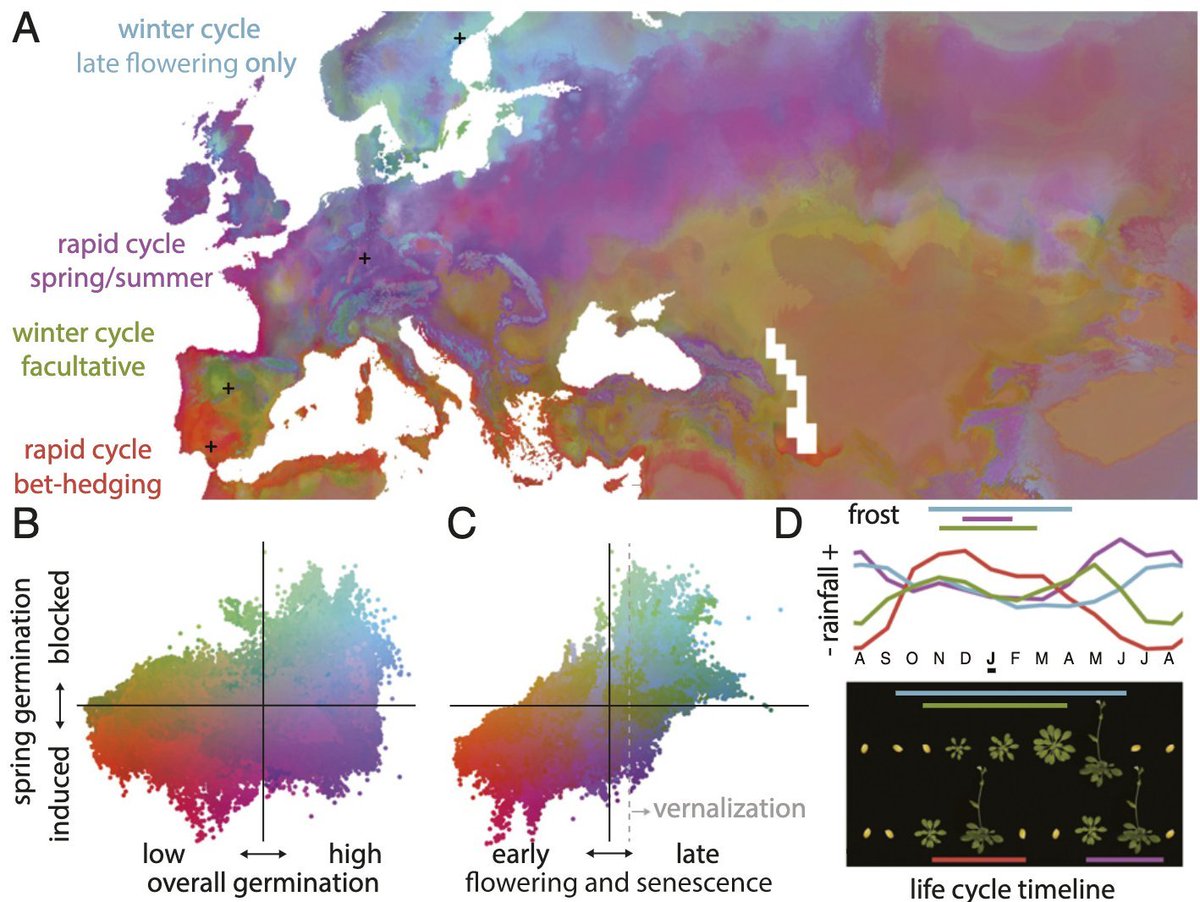Our paper "Genetic diversity loss in the Anthropocene" is out in @ScienceMagazine!
We study how genetic diversity is lost by habitat loss to help define @UNBiodiversity #Sustainable targets
science.org/doi/10.1126/sc…
@carnegiescience
@CarnegiePlants
@CarnegieEcology
@Stanford
We study how genetic diversity is lost by habitat loss to help define @UNBiodiversity #Sustainable targets
science.org/doi/10.1126/sc…
@carnegiescience
@CarnegiePlants
@CarnegieEcology
@Stanford

This all started with a deep worry about our lack of knowledge of global losses of genetic diversity and the call for more conservation policies that account for genetics @LindaLaikre, @seanmhoban, and others 

in summer 2021, a new @UN press release (motivated by a piece by @sdiazecology 10.1126/science.abe1530) presented the goal to preserve “at least 90% of genetic diversity within all species”. Great news, but how do we get there and measure progress?
un.org/sustainabledev…
un.org/sustainabledev…
The direct approach to track progress should work: we SEQUENCE ALL THE GENOMES and track genetic diversity over time, but empirical studies show shy signals (Leight et al Evo App, @KatieMillette et al Eco Letter). Perhaps there's not enough genomic and temporal data yet?
Instead, we tried to think of first principles: how genetic diversity within a species is related to habitat size?
We then described the mutations-area relationship (MAR) using the 1001 Genomes of Arabidopsis (#arabidopsislove)
We then described the mutations-area relationship (MAR) using the 1001 Genomes of Arabidopsis (#arabidopsislove)

We did lots of computer simulations to see if such a simple mathematical relationship could predict losses of genetic diversity if we know how much habitat is removed in our simulations ... it worked! 

So could we use this method to provide a data-driven target for. the @UNBiodiversity #SustainableDevelopment goals?
We though of several back-of-the-envelope calculations, e.g. using global area transformations, from @IPBES, which is ~40% of Earth (@globalforests loss map below)
We though of several back-of-the-envelope calculations, e.g. using global area transformations, from @IPBES, which is ~40% of Earth (@globalforests loss map below)

The using MAR and land data we back-calculated genetic loss, suggesting an average already over 10%.
But this is approximate and we still do not understand well the uncertainty of these methods ... we lack data from so many species!
But this is approximate and we still do not understand well the uncertainty of these methods ... we lack data from so many species!
+ a single estimate is not too helpful when many species have lost close to 0% and others have lost 100%, so instead we study variability in genetic diversity losses
Many threatened species must have lost a lot (>>10%) based on habitat loss, and it will keep ongoing @moldotorg
Many threatened species must have lost a lot (>>10%) based on habitat loss, and it will keep ongoing @moldotorg

This may read daunting, but we can ACT NOW. @UNBiodiversity should make bold plans to protecting populations and genetic variation of species to ensure long-term evolution and adaptation 

And we all--ecologists, geneticists, evo biologists--even working on basic science can help improve these methods and better protect nature!
Please reach out with ideas to improve
Please reach out with ideas to improve

🙏thankful to our lab's team @LucCzech @leg2015 @s_hateley @laura_leventhal @MeganRRuffley seba @ZessingAround and fantastic collaborators @TomBooker12 @ChrisKyriazis @plantricia @Noguesbravo @VPagowski @spence_jeffrey_ @clw_gg
& 🙏 thanks @markabelan for artistic cover!
& 🙏 thanks @markabelan for artistic cover!
• • •
Missing some Tweet in this thread? You can try to
force a refresh







